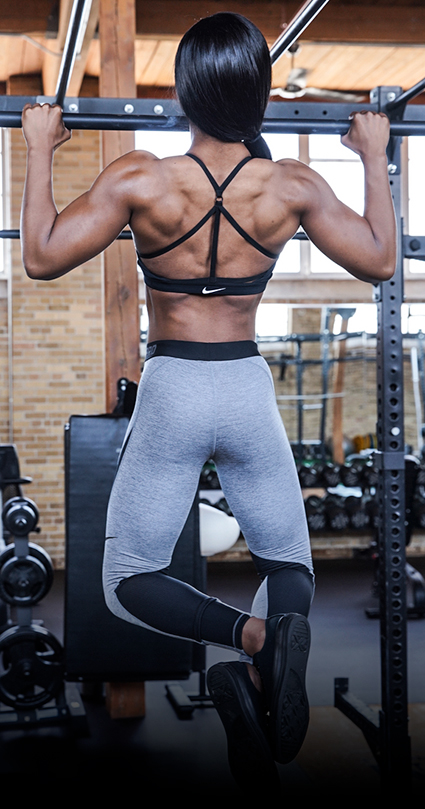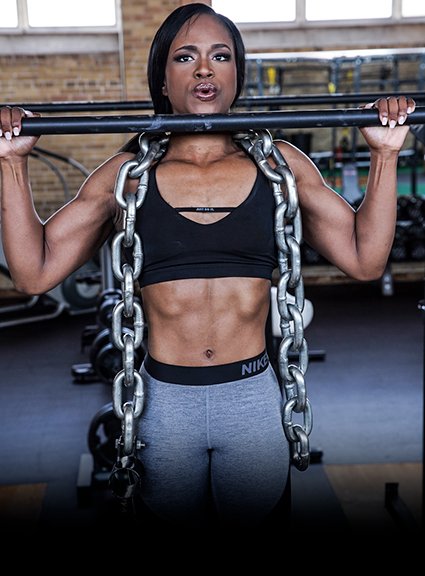Freak Fitness

As a strongman competitor, Darren has pulled 50,000 lb trucks and dead lifted 805 lbs. As a competitive bodybuilder, he has won Provincial Super-heavyweight & Overall titles. As President & CEO of FREAK Fitness, he has coached his clients to hundreds of Novice, Provincial/State, National, and IFBB Pro titles. Having been involved in the sport of bodybuilding for over 20 years, Darren has his finger on the pulse of the local and international bodybuilding scenes, and will be keeping you informed through his column, “Freak Fitness."

Pull-ups vs. Chin-ups
Muscle Insider examines the similarities and differences
It has been widely accepted for a long time that pull-ups and/or chin-ups are two of the best exercises for developing strength and increasing muscle mass in the upper body, and more specifically for back and biceps. This is why you always see pull-ups and/or chin-ups included in strength and hypertrophy training programs as well as various physical admission tests for law enforcement, military, and emergency services.
As commonly as pull-ups and chin-ups are used, there’s still a lot of confusion between the two exercise variations. The two exercises are similar, yes, but there are some big differences. I want to take this opportunity to examine the differences of each exercise so you can best select the exercise that suits your particular performance and physique goals.
Grip
Let’s start with the most obvious difference between the pull-ups and chin-ups: the grip.
Pull-ups are performed using an overhand (pronated) grip in which the palms of your hands face away from you. The most effective grip width is just outside shoulder width.
Chin-ups are performed using an underhand (supinated) grip in which the palms of your hands face towards you. The most effective (and safest) grip width is just inside shoulder width.

Direction
The next difference I want to discuss is the line of pull.
Both exercises work through the vertical plane of motion, but because the different grips put the elbows in different positions, it does create a slight difference in how the back and biceps are worked.
Pull-ups involve shoulder adduction, where the elbows flare out to the sides as they come down and back.
Chin-ups involve shoulder extension, where the elbows stay in front of the body as they come down and back.
Muscles Worked
With different grips and lines of pull, it won’t come as a surprise, then, that there’s a resulting difference in which muscles are being worked.
Pull-ups put the biceps in a weaker position so the back is forced to do more of the work.
Chin-ups, on the other hand, put the biceps in a stronger position so they can contribute more help in performing the movement. Thus, most people are stronger in chin-ups than in pull-ups because chin-ups recruit biceps and back muscles whereas pull-ups rely mostly on the back to perform the movement.

Safety
When performed correctly, both exercises are safe and effective, but some special consideration needs to be taken in certain cases.
Shoulder health should be a primary concern for all athletes, and performing pull-ups with too wide a grip or pulling up so that the bar goes behind your neck and touches your traps are both practices that put your shoulders in unjustified risk of injury.
Similarly, those of you with pre-existing shoulder or biceps issues may want to initially stay away from chin-ups. Because of the increased stress the chin-up puts on the shoulder and biceps, I’d recommend you first perform underhand (supinated) grip pull-downs with a lighter weight to test your range of motion. As you regain your strength and range of motion, increase the load.
Having torn my biceps during my strongman days, I was able to return to pull-ups much faster than it took me to go full throttle on chin-ups again. The underhand position under load really stretched my biceps, which now had limited range of motion after my injury. So I had to be very careful to warm up longer with underhand pull-downs before I got into my work sets on the chin-up bar.
Which Is Better?
I believe there are benefits to performing both pull-ups and chin-ups.
Using a variety of exercises—pull-ups, chin-ups, and even neutral-grip pull-ups (performed using a “semi-pronated” grip in which the palms face each other)—offers a diverse way to hit your back and biceps. New stimulation breeds new growth, so it will definitely benefit you to do them all.
Using a lot of variation in one plane of motion allows you to hit the target muscles hard—in this case, back and biceps—but with slight changes in movement angles, you’re also able to minimize risk of overuse injury.
So now that you know the difference between pull-ups and chin-ups, the precautions for each variation, and the benefits of these movements, I hope you will now make them staple exercises in your strength and hypertrophy training program.

Weighted Pull-Ups and Chin-Ups
What happens when you become so strong that you can rep out far beyond optimal strength (3–5) or hypertrophy (6–12) rep ranges in pull-ups and/or chin-ups?
The answer is simple: Add more weight!
Employing a weight belt with plates or kettlebells, a weight vest, or even something such as heavy chains can help you take your workout to the next level!
Photos: Dave Laus / Model: Kaila Wright
Click HERE to sign up for our free newsletter!

